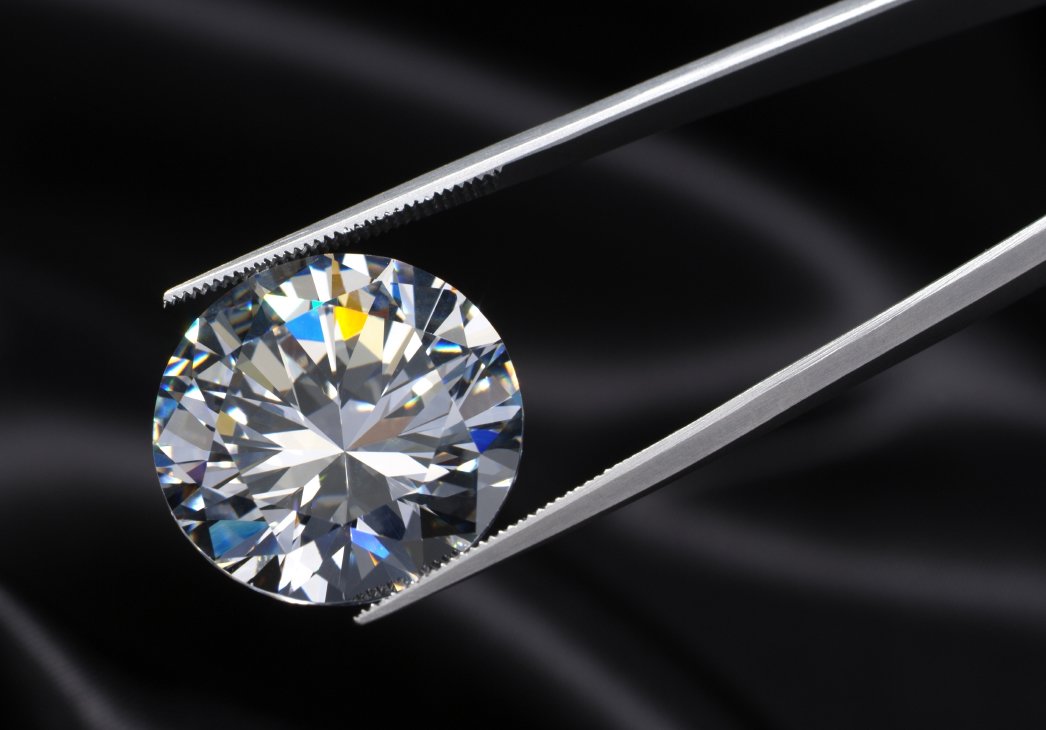Diamonds have captivated our imagination for centuries, but with the growing popularity of diamond simulants, it's becoming increasingly challenging to distinguish the real from the fake. In this blog, we'll explore some of the key characteristics that can help you identify a genuine diamond and avoid being duped by imposters. From examining the diamond's appearance and weight to using specialized equipment and seeking certification, we'll provide practical tips and insights to help you become a savvy diamond shopper.
To identify real diamonds and fake diamonds, you can follow these tips:
Conduct a visual inspection: Real diamonds are generally transparent and have a high level of sparkle and brilliance. Fake diamonds, on the other hand, may appear cloudy, dull, or lackluster. You can use a loupe or magnifying glass to examine the stone more closely. One of the most notable features is the diamond's brilliance or the way it reflects light. A diamond should sparkle in all directions, and the light should reflect off its facets. If the diamond appears dull or has a rainbow reflection, it is likely not a genuine diamond.
Check the weight: Diamonds are heavier than most other materials of the same size. You can use a precision scale to weigh the stone and compare it to the weight of a known diamond.
Look for imperfections: Diamonds are formed under extreme pressure and heat, and as a result, they often have imperfections, known as inclusions. Real diamonds will have natural inclusions that can be seen under a magnifying glass or loupe.
Fog test: Another way to spot a fake diamond is to breathe on it. A real diamond will not fog up because it disperses heat quickly. A fake diamond, on the other hand, will fog up and take longer to clear.
Scratch test: Diamonds are the hardest natural substance on earth, so they should not scratch easily. You can test this by using a diamond tester or by rubbing the diamond against a piece of sandpaper. If the diamond leaves a scratch, it's not a real diamond.
Test the diamond's thermal conductivity: Diamonds are excellent conductors of heat. You can use a thermal conductivity tester to check the heat conductivity of the stone. If the tester shows a low reading, the stone is likely a fake.
Use a diamond tester: A diamond tester is a device that uses electrical conductivity to determine whether a stone is a diamond or not. It measures the speed at which heat travels through the stone. If the tester shows a high reading, the stone is likely a diamond.
Get a professional appraisal: If you are still unsure about the authenticity of your diamond, you can take it to a professional appraiser. They will examine the stone in detail and provide you with a certification that confirms the diamond's authenticity.
Overall, a combination of visual inspection, weight measurement, defect assessment, thermal conductivity testing, and professional appraisal is needed to distinguish between real diamonds and imitation diamonds. You can make sure that you are purchasing a real diamond by using these tips.
To identify real diamonds and fake diamonds, you can follow these tips:
Conduct a visual inspection: Real diamonds are generally transparent and have a high level of sparkle and brilliance. Fake diamonds, on the other hand, may appear cloudy, dull, or lackluster. You can use a loupe or magnifying glass to examine the stone more closely. One of the most notable features is the diamond's brilliance or the way it reflects light. A diamond should sparkle in all directions, and the light should reflect off its facets. If the diamond appears dull or has a rainbow reflection, it is likely not a genuine diamond.
Check the weight: Diamonds are heavier than most other materials of the same size. You can use a precision scale to weigh the stone and compare it to the weight of a known diamond.
Look for imperfections: Diamonds are formed under extreme pressure and heat, and as a result, they often have imperfections, known as inclusions. Real diamonds will have natural inclusions that can be seen under a magnifying glass or loupe.
Fog test: Another way to spot a fake diamond is to breathe on it. A real diamond will not fog up because it disperses heat quickly. A fake diamond, on the other hand, will fog up and take longer to clear.
Scratch test: Diamonds are the hardest natural substance on earth, so they should not scratch easily. You can test this by using a diamond tester or by rubbing the diamond against a piece of sandpaper. If the diamond leaves a scratch, it's not a real diamond.
Test the diamond's thermal conductivity: Diamonds are excellent conductors of heat. You can use a thermal conductivity tester to check the heat conductivity of the stone. If the tester shows a low reading, the stone is likely a fake.
Use a diamond tester: A diamond tester is a device that uses electrical conductivity to determine whether a stone is a diamond or not. It measures the speed at which heat travels through the stone. If the tester shows a high reading, the stone is likely a diamond.
Get a professional appraisal: If you are still unsure about the authenticity of your diamond, you can take it to a professional appraiser. They will examine the stone in detail and provide you with a certification that confirms the diamond's authenticity.
Overall, a combination of visual inspection, weight measurement, defect assessment, thermal conductivity testing, and professional appraisal is needed to distinguish between real diamonds and imitation diamonds. You can make sure that you are purchasing a real diamond by using these tips.

